
views
- Monopoly Junior is very similar to regular Monopoly, except you have to buy every property you land on and players only use $1 bills.
- Feel free to customize the rules a bit to suit older players. Monopoly Junior is designed for players as young as 5 to play, so older players might enjoy minor changes.
- The goal of Monopoly Junior is to buy property, zoom around the board, and get money. When someone goes bankrupt, the game ends and the player with the most cash wins!
Setup
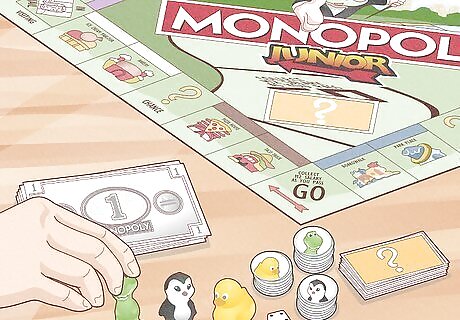
Lay the game parts out and open the game board. Open the box and separate the pieces. Unfold the board and set it in the middle of the table where you’re playing. Your Monopoly Junior game should include: 1 game board 4 player miniatures 1 die 20 Chance cards 48 player tokens (called “sold signs”) 90 Monopoly banknotes

Allow each player to choose a character and take their sold tokens. Different versions of the game use different tokens, but the 4 default minis on the basic Monopoly Junior game are a black dog, a blue boat, a green car, and an orange cat. Let each player pick their piece. Each player takes their 12 color-coded player tokens with their photos on them (called sold signs). Place all of the minis on the “Go” square. Each player’s color-coded player tokens are Monopoly Junior’s version of the property card you buy in normal Monopoly. When a player buys a property, they put their token on it. The tokens have photos of their corresponding character on them.
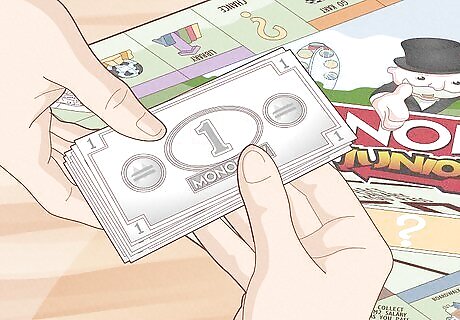
Select one player to serve as the banker and give them the money. The banker administers the money in the game. The banker can play if they’d like to so long as they keep the bank money separate from their own cash. If you’re playing with a child who’s enthusiastic about being the banker, let them do it! This is a fun way for them to practice counting and money management.
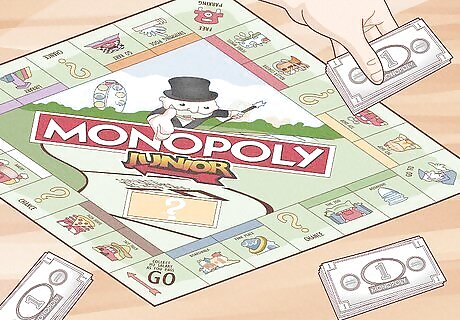
Ask the banker to distribute the Monopoly money. Unlike traditional Monopoly, this version of the game only uses $1 bills. The amount of money the banker distributes depends on how many are playing. For a game with 2 players, everyone gets $20. For a game with 3 players, everyone gets $18. For a game with 4 players, everyone gets $16.
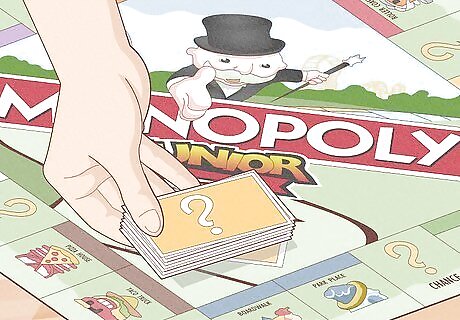
Shuffle the Chance cards and place them on the Chance space. The orange cards with the question mark on them are Chance cards. Like typical Monopoly, each Chance card contains instructions. Make sure that all of the Chance cards are facing down so that players won’t be able to see what they are before they draw them.
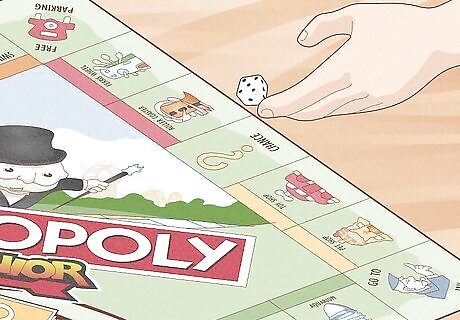
Give the youngest player the die and have them go first. If any players are tied in age, just roll the die and have whoever rolls the highest number go first. After each turn, play continues to the left and the next player rolls the die. This is a great time to introduce the idea of clockwise and counterclockwise if your child isn’t familiar with them!
Gameplay
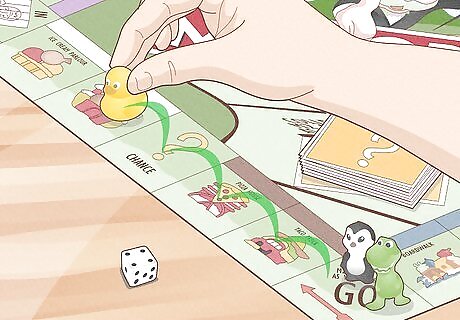
Roll the die. At the beginning of each turn, roll the die and move your token that number of spaces. Only roll the die once per turn. Read the instructions for each square that you land on.
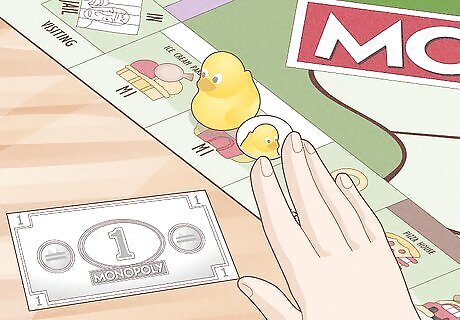
Buy property if it isn’t owned yet and put your token on it. If you land on an unowned space, you must purchase it. The price for each property is listed at the bottom that space. Once a player purchases a property, have them place one of their player tokens on the space to symbolize they own it. Unlike traditional Monopoly, there is no choice involved when you land on property. However, if you want to increase the complexity of the game for older players, feel free to auction properties off and give players the choice to buy each square or auction it off. If a player cannot purchase a property they land on, the game ends.
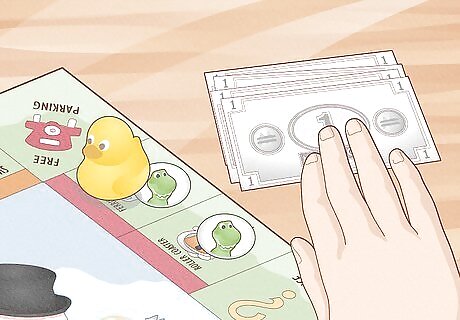
Pay rent when you land on a space owned by someone else. If you land on a property with another player's token on it, pay the owner the dollar amount shown on the space. If that player owns all of the properties in that color, pay twice the amount. For example, if you land on a $2 red property and the same player owns both of the red properties, you’d pay $4.
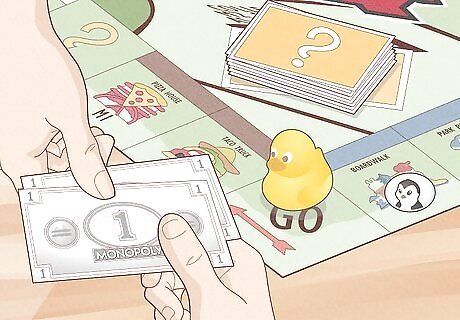
Collect $2 whenever you pass Go. If you land on or pass the Go space on the board, collect $2 from the bank. For any Chance card that tells you not to pass Go, do not take the $2 you normally would.
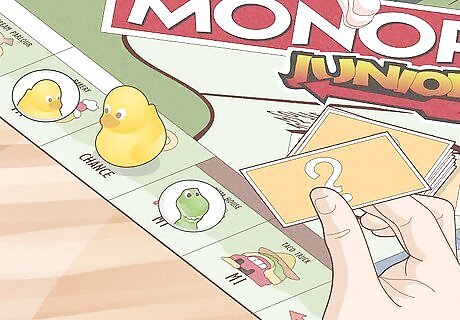
Draw a Chance card if you land on a Chance space. If you land on Chance, draw the top card from the Chance pile and follow its instructions. Then, place the Chance card at the bottom of the pile. Some of the alternative versions of Monopoly Junior have unique rules with their Chance cards. Refer to your instructions if you aren’t using the default version of the game.
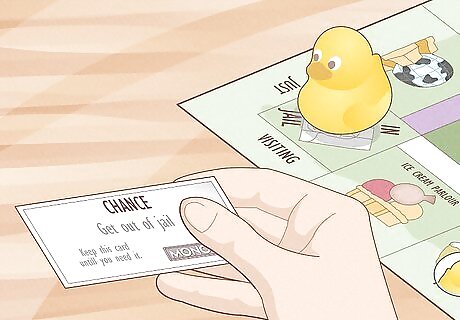
Pay $1 or use a Get Out of Jail card if you get sent to jail. If you get sent to jail because you land on a square that sends you there or you’re unlucky enough to draw a Chance card that sends you to jail, pick up your piece and put it in the jail square. On your next turn, pay $1 or use a Get Out of Jail free card and then take your turn as normal. Remember, if a player rolls a number that causes them to land on the jail square, they’re “just visiting” and they don’t have to pay anything. In normal Monopoly, you can try and roll doubles on the two dice for up to 3 turns to try and get out of jail. In Monopoly Junior, you don’t get that option. You still collect rent while you’re in jail.
Ending the Game
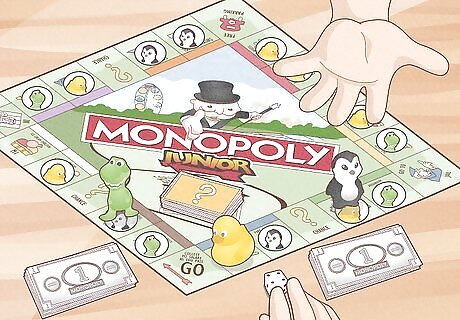
Stop playing whenever one player runs out of cash. The moment a player cannot afford a property, can’t pay rent, or can’t pay a Chance card’s fee, that player declares bankruptcy and the game ends. The player who ran out of money cannot win the game.
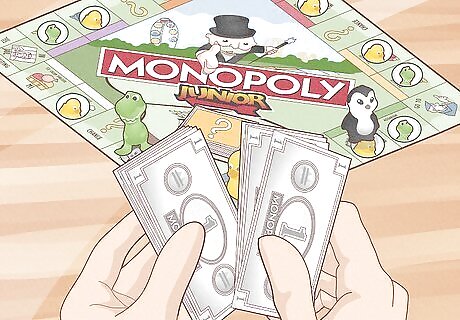
Count every player’s money to determine the winner. If there are only two players, then the player who still has some money wins the game. If multiple players are still in the game, everyone counts their money and the player with the most cash is the winner. If any players are tied, add up the value of each player’s properties. Whoever owns the most expensive real estate portfolio is declared the winner!
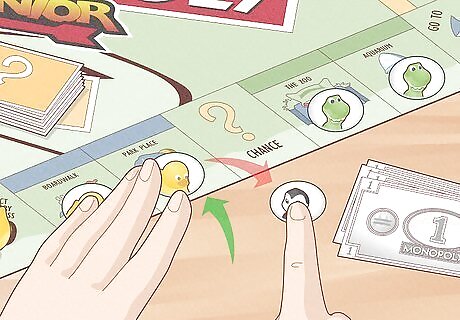
Use the advanced rules if you want to extend the game. Older players may not want the simple “cash is king” game rules. If you prefer, allow players who go bankrupt to pay their fees or rent with their property. Sell your property to the other player (or the bank if it’s a Chance card or open space) for the face value of your property. If a player cannot pay another player or the bank by selling their properties, then they go completely bankrupt and the game ends.

















Comments
0 comment